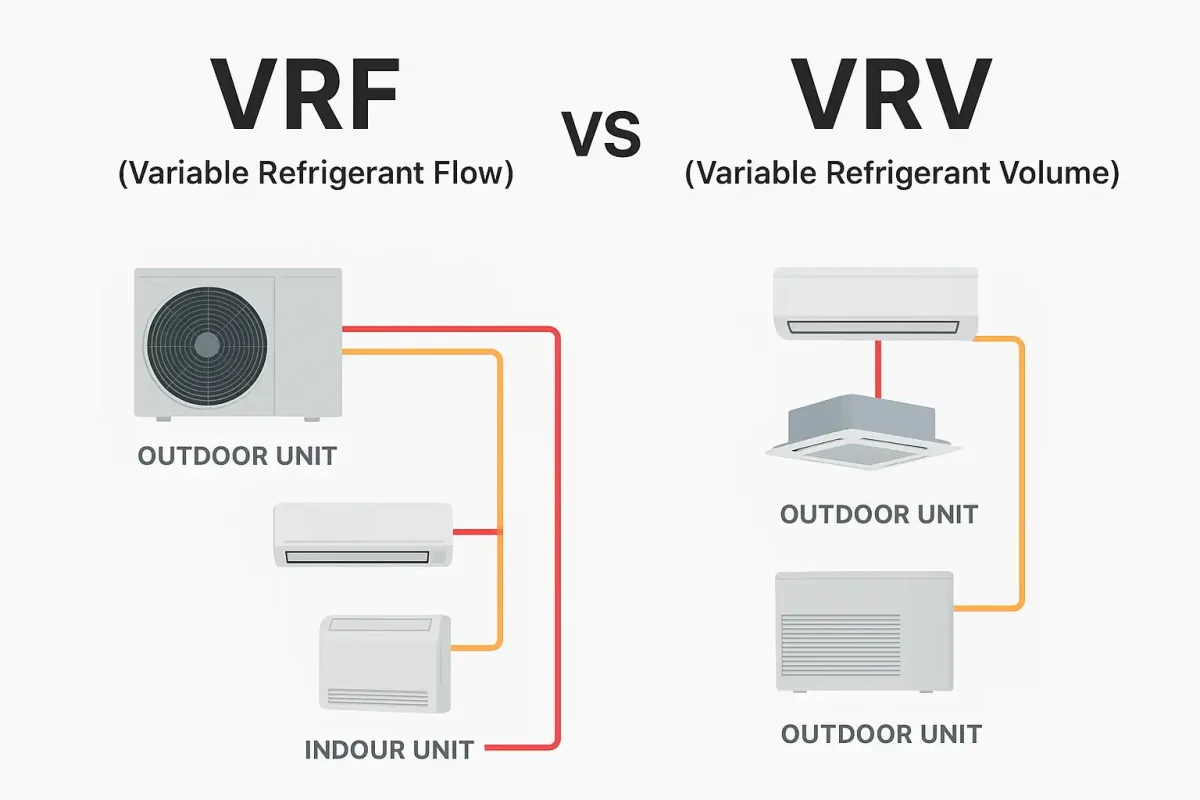What is a VRF System?
A VRF system (Variable Refrigerant Flow) is an advanced type of HVAC technology that uses refrigerant as the cooling and heating medium. It connects one outdoor unit with multiple indoor units, allowing precise control of temperature in different rooms or zones. Unlike traditional AC systems, VRF systems adjust the amount of refrigerant flow according to demand, making them highly efficient and flexible.
Advantages of VRF Systems
- Energy efficient with inverter compressors
- Quiet operation
- Flexible installation for large or small buildings
- Can heat and cool multiple rooms at the same time
- Precise temperature control for each zone
Types of VRF Systems
- Cooling-only VRF: Provides cooling only.
- Heat Pump VRF: Can either cool or heat (one mode at a time).
- Heat Recovery VRF: Provides both cooling and heating simultaneously in different zones.
VRF vs VRV – What’s the Difference?
The terms VRF and VRV are often used interchangeably. Both refer to the same HVAC technology. The only difference is:
- VRV (Variable Refrigerant Volume): Trademarked name by Daikin (invented in 1982).
- VRF (Variable Refrigerant Flow): The generic term used by all other manufacturers (LG, Mitsubishi, Samsung, Panasonic, etc.).
Conclusion
Whether you call it VRF or VRV, the technology is the same: an energy-efficient, flexible, and reliable HVAC system ideal for residential, commercial, and industrial applications. Choosing between VRF brands comes down to design, budget, and specific project requirements, but all deliver the same core benefits of comfort and efficiency.
Visit Home Choice Electronics for more guides on modern HVAC and home appliances.


















